Albanians in Egypt: Legacy of Power and Influence

“I did not dedicate my entire life to Egypt and accomplish things that others would have deemed impossible just to leave its enjoyment to a pasha. I will never allow Egypt to become English and Turkey to become Russian!”
Muhammed Ali Pasha, from Gilbert Sinoue, The Last Pharaon – Muhammed Ali, Pygmalion 1997, page 12
Introduction
The tale of King Zog and King Farouk is intricately woven into the rich tapestry of Albanian influence in Egypt—a legacy spanning two centuries. From the transformative reign of Muhammad Ali Pasha to the intellectual and cultural contributions of Albanian scholars and writers, this enduring presence shaped Egypt’s governance and society.
This golden thread of history persisted until the twilight of King Farouk’s reign in 1952, marking the culmination of an extraordinary Albanian dynasty in Egypt. Unveiling the legacy of the Albanian dynasty in Egypt, focusing on Muhammad Ali Pasha’s visionary leadership and revolutionary reforms. Highlighting the broader Albanian contributions to Egypt’s governance, culture, and society.
From the intellectual pursuits of Albanian writers to the enduring legacy of the royal connection between King Zog and King Farouk, this article will uncover a captivating chapter of shared heritage that bridged nations and left an indelible mark on history.
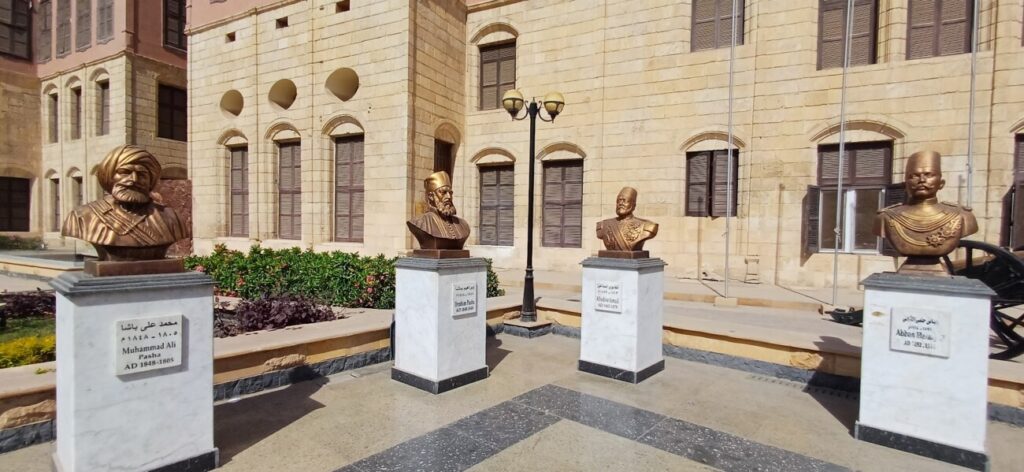
Photo Credits by Gerhard Mema, Fall 2024.
Part One: The Origins of Mehmet Ali Pasha
Muhammad Ali Pasha, born in 1769 in Kavala, Greece, to Albanian parents from Zëmblak in Korça County, emerged as a pivotal historical figure in the region. Kavala’s strategic location on the Via Egnatia, connecting cities like Durrës and Istanbul, shaped its economic and cultural significance.
Despite a challenging childhood marked by the loss of 13 siblings and separation from his family, Muhammad Ali pursued military training in Istanbul and was fluent in Albanian, with limited Turkish and Arabic skills.
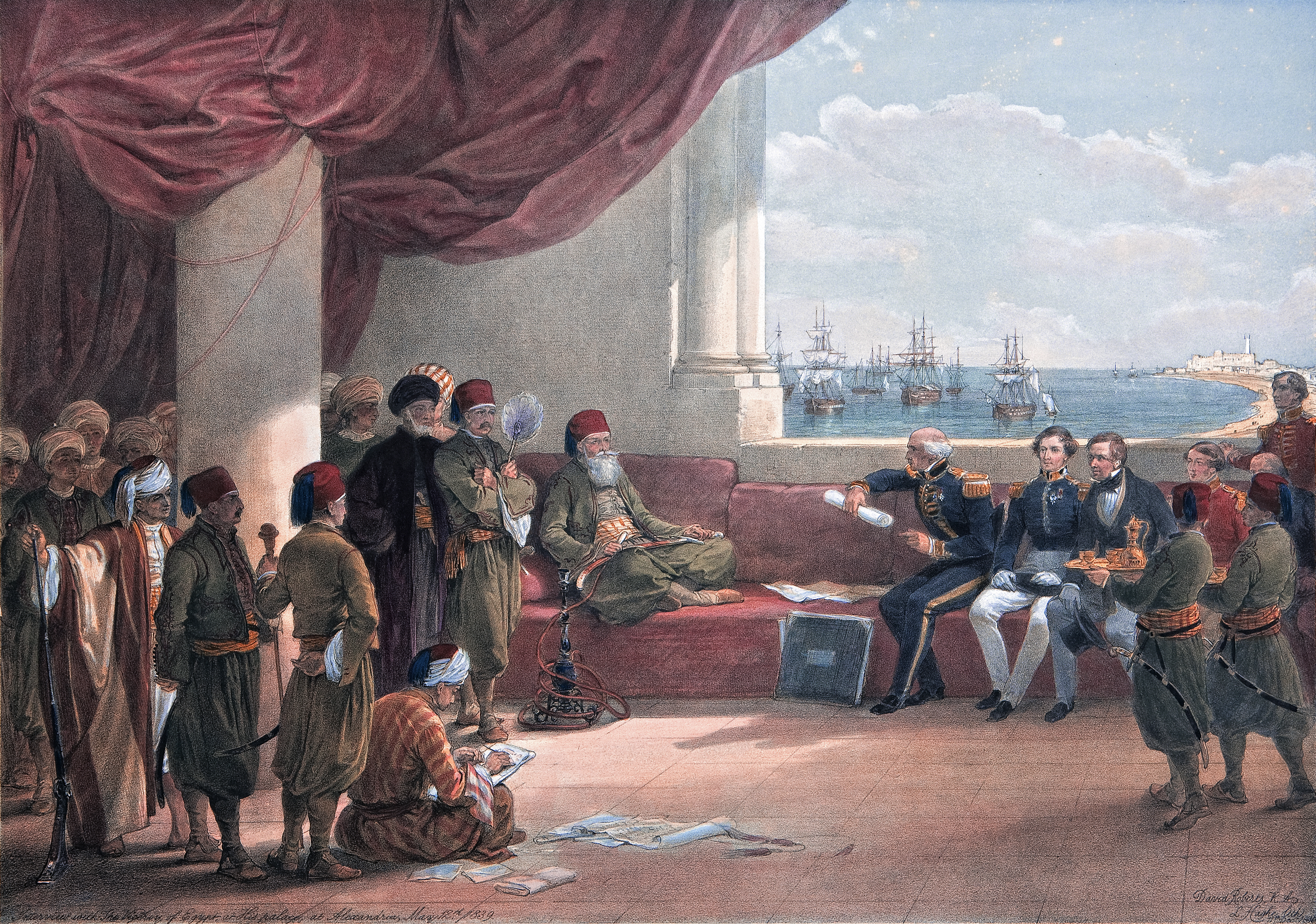
Initially a merchant traveling through Albania, Greece, Macedonia, and Turkey, he rose to prominence amid the Ottoman Empire’s decline, marked by key defeats and the French invasion of Egypt in 1798. In 1801, Muhammad Ali, alongside Albanian commanders such as Omer Vrioni and Ibrahim Pasha of Berat, joined the Egyptian campaign against the French.
Distinguished for their valor, the Albanian troops secured victories but faced significant challenges, including disputes over payments, Mamluk dominance in Egypt, and struggles for Egypt’s independence from Ottoman control. This marked the initial steps toward the creation of modern Egypt.
Part Two: The Creation of New Egypt
After the French occupation of Egypt ended, Muhammad Ali Pasha faced three critical challenges: securing Egypt’s independence, eliminating Mamluk dominance, and addressing the dissatisfaction of Albanian mercenaries over unpaid wages. He reformed Egypt through military, administrative changes, strengthened foreign ties, and plans to eliminate the Mamluks.
The Mamluks, an entrenched feudal elite of Turkish and Circassian origin, had ruled Egypt since 1250. In March 1811, Muhammad Ali orchestrated their elimination through a cunning plan. During a Cairo feast celebrating military victories and Ibrahim Pasha’s campaign, Albanian soldiers ambushed and killed Mamluk leaders, solidifying Muhammad Ali’s rule over Egypt.

Massacre of the Mamluks at the Cairo Citadel. Horace Vernet, 1860’s. Wikimedia Commons, 2017.
After Muhammad Ali Pasha solidified his control in 1811, he introduced several important reforms, particularly in the military, education, culture, and religion. He modernized the Egyptian army and navy with the assistance of French military advisors. Additionally, he played a key role in initiating the Suez Canal project, aimed at improving Egypt’s trade connections.
Furthermore, Muhammad Ali modernized Egypt’s education system by advancing its structure and sending students to study in the West. He also enacted cultural and religious reforms, safeguarding ancient monuments like the Pyramids of Giza and Luxor temples, while supporting the Coptic Christian community, previously oppressed under Ottoman rule.

In addition to reforms, he led ambitious military campaigns across Sudan, the Middle East, Greece, and the Ottoman Empire. Notably, in 1825, he sent Ibrahim Pasha to Greece, achieving key victories at Missolonghi, Navarino, and Tripolitsa. However, the intervention of British, French, and Russian fleets led to defeat at Navarino in 1827, ending Egypt’s Greek ambitions.
Shifting focus, during the 10-years period of 1830-1840, Muhammad Ali expanded into Ottoman territories in Palestine, Jordan, Cyprus, Crete, Lebanon, Syria, and southern part of Anatolia. His victories under Ibrahim Pasha, such as in Konya, Nizap and Acre shocked Sultan Mahmud II, undermining the Sultan’s authority and contributing to his eventual death in 1839.
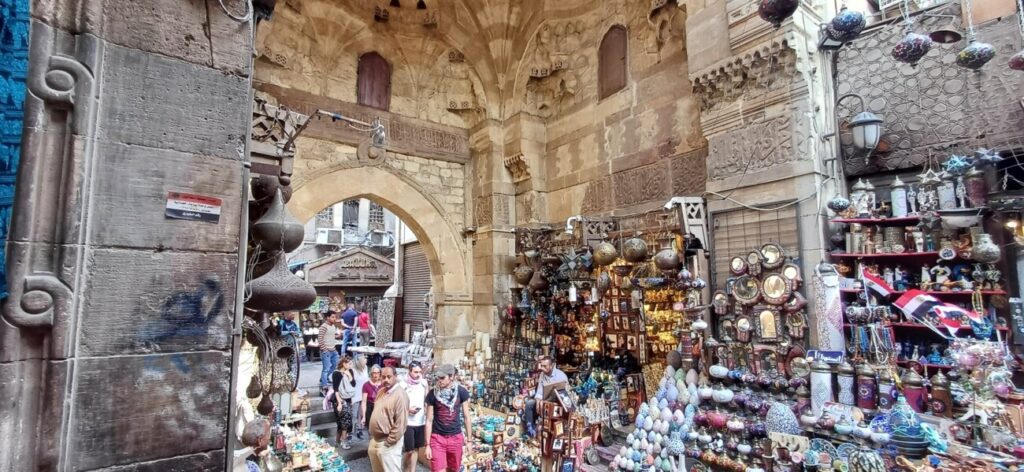
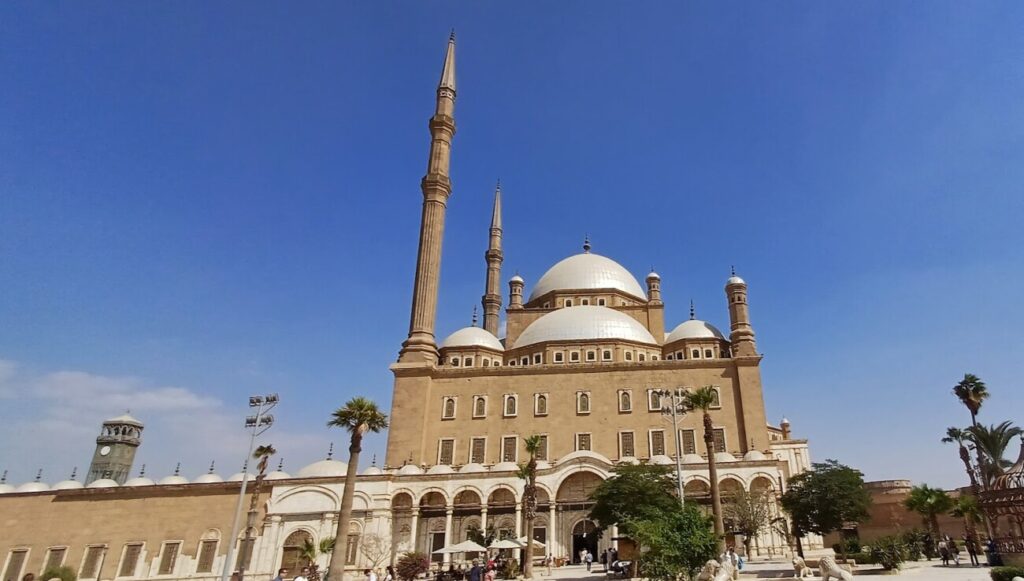
Fall 2024.
Part Three: Egypt and the Albanian National Awakening
After the death of Muhammed Ali in 1849, a significant influx of Albanian intellectuals, poets, writers, and military leaders settled in cities like Alexandria, Helliopolis and Cairo. Many of these individuals hailed from the Vilayets of Shkodra, Manastir, and Janina.
For instance, notable figures, including Andon Zako Çajupi, Bardhyl Kadiu, Theofan Stilian Noli, Filip Shiroka, the Frashëri brothers, Ismail Qemali, Kole Muka, Kostandin Kristoforidhi, Mihal Grameno, Thimi Mitko, and Zef Jubani, contributed to the cultural and political landscape of Egypt during the Albanian National Awakening.
Their mission involved establishing Albanian schools in Egypt to serve the local Albanian community, sending intellectuals back to Albania to open secret schools, and disseminating Albanian books and journals. They aimed to facilitate communication between the Albanian diaspora in Egypt and their homeland.
Furthermore, they created connections with the other Albanian diaspora groups. Ultimately, they sought to organize a general Albanian revolution against the Ottoman Empire and its neighbours, contributing to Albania’s successful declaration of independence in 1912 after numerous attempts.
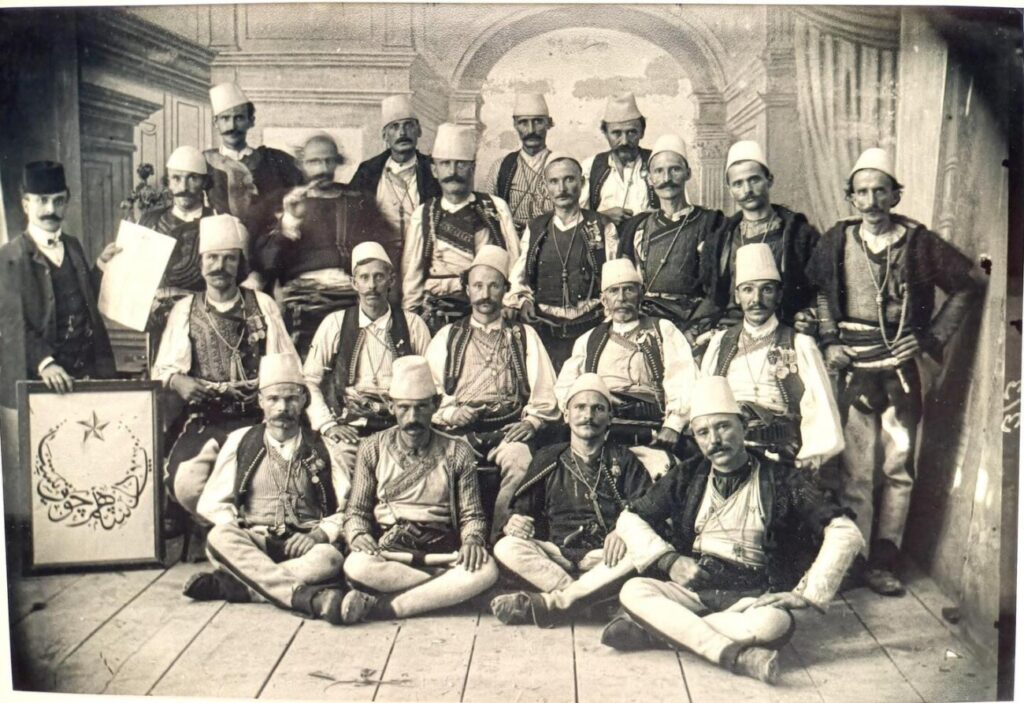
Part Four: King Farouk and The End of The Albanian Adventure
The last King of Egypt, Farouk I, was the son of King Fuad I and Nazli Sabri, and the brother of Princesses Faika, Fathia, Fawzia, and Faiza. He was described as a powerful and rich king, possessing a lot of properties and luxurious cars in Egypt. Among his siblings, Princess Fawzia, celebrated as one of Egypt’s most beautiful women, married the Shah of Iran, Mohammad Reza Pahlavi.
King Farouk, known for his extravagant lifestyle, faced widespread public dissatisfaction, which fueled several attempts to overthrow his regime. He was married twice and struggled to maintain stability during his reign. When World War II began in 1939, Egypt sought to remain neutral, navigating the complex dynamics between the Allies and the Axis powers.
However, in 1940, Italian forces initiated the invasion of Egypt, marking the beginning of the North African Campaign (1940–1943). Egypt, after shifting allegiances, was ultimately compelled to collaborate with the Allies. Following the Allies’ decisive victory at the Second Battle of El-Alamein (23 October – 11 November 1942), a significant meeting took place at Al-Manial Palace in Cairo. This gathering brought together the leaders of Nationalist China, the United States, the United Kingdom, and Egypt to discuss the future of the war and post-war strategies.
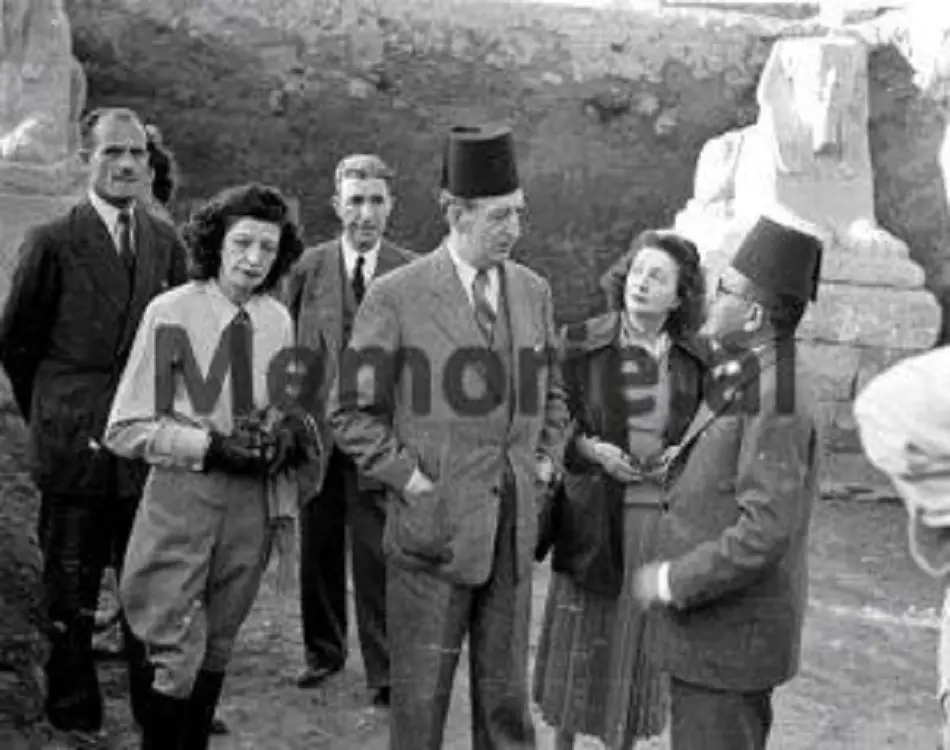
Later, Egypt faced significant unrest. The country’s defeat in the Arab-Israeli War and growing discontent with the Kingdom of Egypt fueled widespread public dissatisfaction, ultimately leading to a revolt against King Farouk’s regime. In the early 1950s, General Gamal Abdel Nasser, along with Anwar Sadat, Salah Salem, and Mohamed Naguib, orchestrated a military coup. This effort was reportedly carried out in collaboration with the American Central Intelligence Agency (CIA), marking a pivotal moment in Egypt’s modern history.
After Nasser’s regime came to power, the Albanian community in Egypt faced assimilation under Arabization policies. Many members of the community emigrated to countries such as the United States, Turkey, Saudi Arabia, and Europe. Meanwhile, King Farouk and his royal family were exiled to Capri, Italy.
On the other hand, Princess Fawzia, who had ruled as Queen of Iran from 1941 to 1948 alongside King Mohammad Reza Pahlavi (1939–1948), remarried Ismail Chirine in 1949 following her divorce. After the fall of Egypt’s royal dynasty, Fawzia briefly resided in Switzerland before settling in Alexandria, where she lived until her death in 2013.
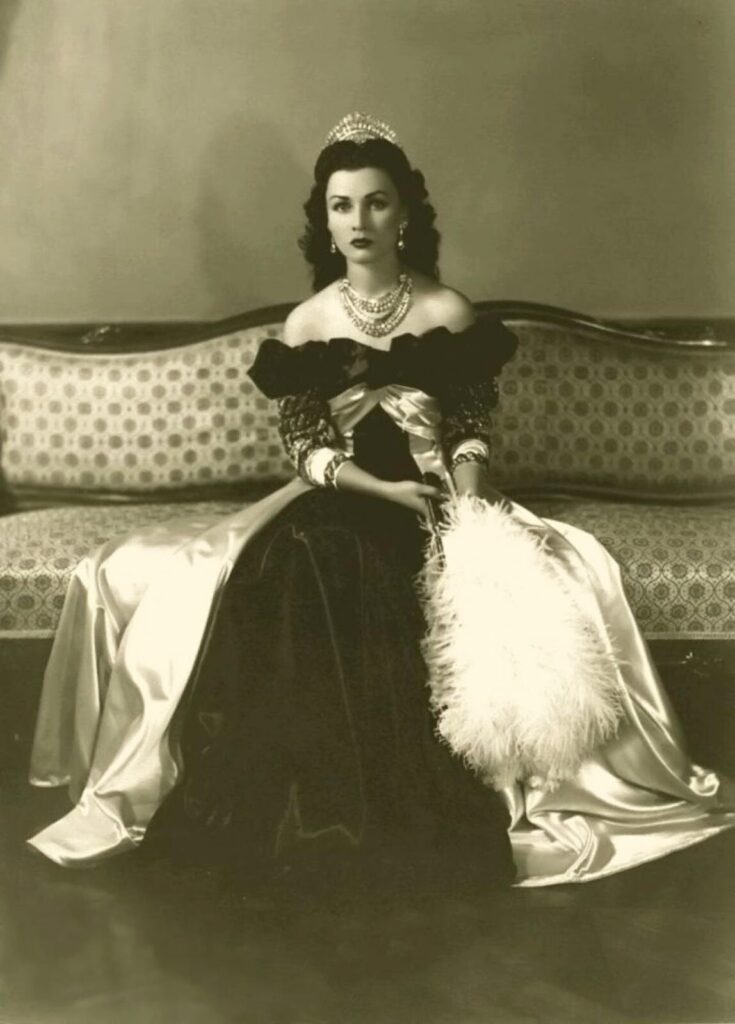
Muhammed Ali and the Albanians of Egypt in other works
The Albanian dynasty of Egypt continues to be highly regarded by Egyptian, Albanian, and international academics, artists, and intellectuals. For example, Aleksander Xhuvani (1880–1961), a renowned Albanian scholar, was the first one who authored a concise history book titled The Albanian Who Created the Egyptian Kingdom (1921). This work was subsequently republished in 1941, 1999, and 2003, reflecting its enduring significance and recognition.
Several television documentary series have focused on the Albanians of Egypt, both in Albanian and Arab diaspora. Notable examples include Shqip by Rudina Xhunga and ABC Story by Ferdinand Dervishi. However, some of these documentaries received limited attention from the Albanian diaspora, resulting in a lack of awareness about the Albanian communities in Cairo, Heliopolis, and Alexandria.

Bashibozouk singing, Gerome, 1868. Wikimedia Commons, 2012.
Additionally, Al Jazeera aired a documentary on the origins of Muhammad Ali, inaccurately portraying him as Turkish, despite his Albanian heritage. The documentary also depicted him as a fanatical and hypocritical figure in Egyptian history, further misrepresenting his legacy.
In February 2016, under the auspices of the Academy of Sciences and Arts of Kosovo, the book From the History of Albanians in Egypt during the 15th–20th Centuries by Muhamed Mufaku was published in Prishtina, Kosovo. The era of Muhammad Ali, along with Khedives Ibrahim and Ismail Pasha through to King Farouk, was marked by numerous artworks created by French painters such as Jean-Léon Gérôme and Louis-Pierre Couder.
Among the most notable pieces recognized by the Albanian diaspora are Prayer in the House (1857), A Joke – An Albanian Blowing Smoke into His Dog’s Nose (1864), and Albanian Guards Performing the Sword-Dance in Front of Local Audience and Musicians (1885), along with many others.
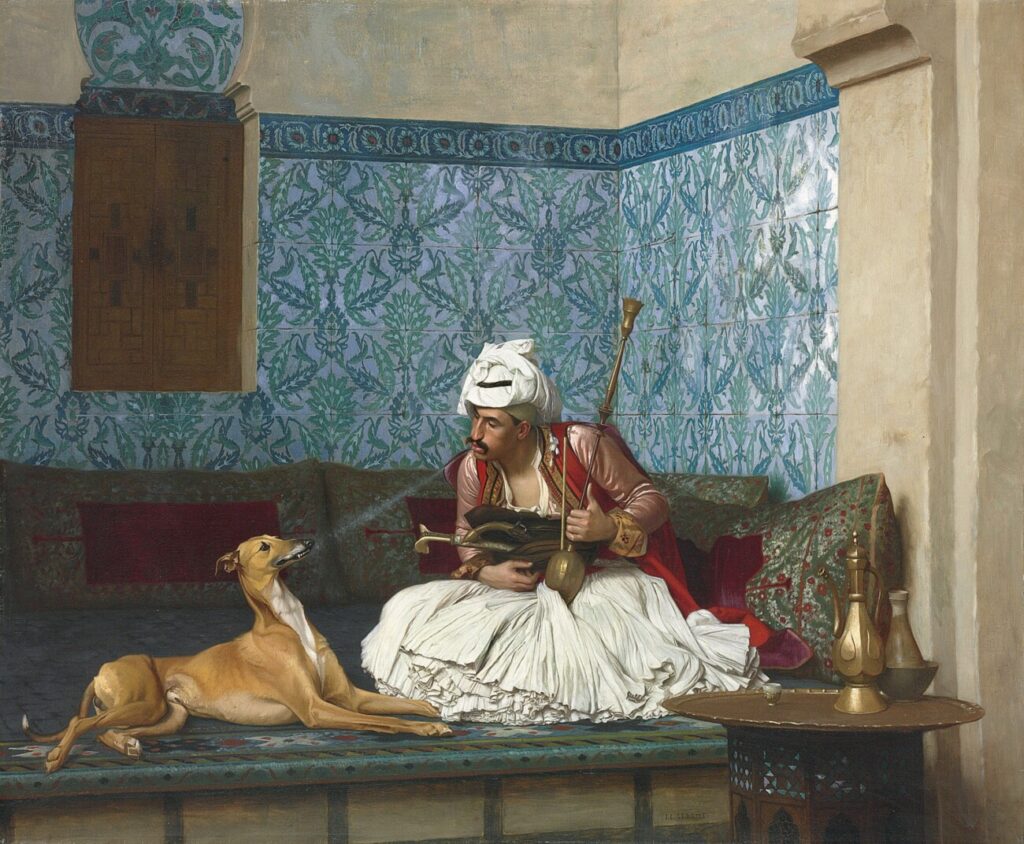
A Joke – An Albanian Blowing Smoke into his Dog’s Nose, Gerome, 1864. Wikimedia Commons, 2013.
In addition to the contributions of numerous academics and artists, Gilbert Sinoué, a renowned French-Egyptian writer and musician, authored a significant work dedicated to the life of Muhammad Ali Pasha. His book, Le Dernier Pharaon – Mehemet Ali (translated into English as The Last Pharaoh – Muhammad Ali), was first published in 1997 and later republished in 2009. Notably, the book is available exclusively in French and has gained recognition for its in-depth portrayal of Muhammad Ali’s legacy.
Many foreign publications have inaccurately described Muhammad Ali as “Turko-Albanian,” despite evidence to the contrary. He spoke only Albanian, had limited knowledge of Turkish, and no knowledge of Arabic. Additionally, another misrepresentation of his legacy claims that he sought to establish Egypt exclusively for Arabs and Albanians and was hostile towards foreigners and Christians. These assertions are not supported by historical evidence and mischaracterize his policies and actions in Egypt.
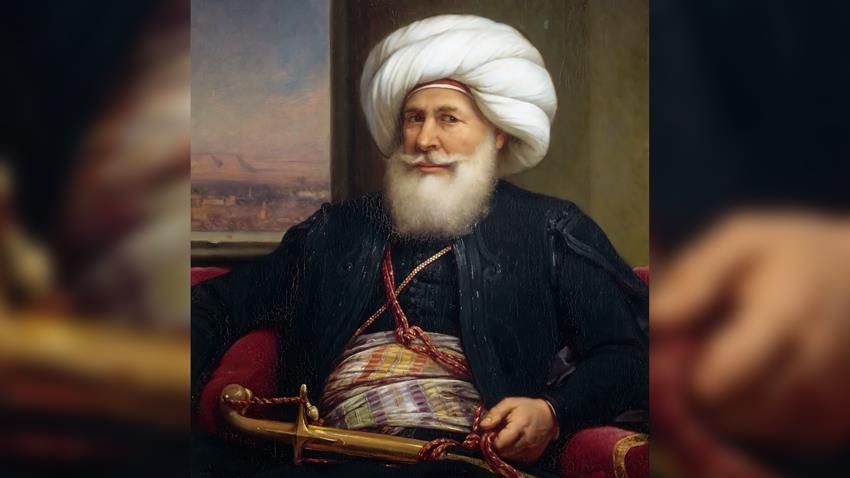
Conclusion
The Albanians in Egypt have made a significant impact on the modern histories of both Egypt and Albania, especially through the founding of the Muhammad Ali dynasty, which played a key role in shaping Egypt’s political, social, and economic landscape for almost a century. Additionally, the Albanian diaspora in Egypt played an important part in supporting the efforts that led to Albania’s independence from the Ottoman Empire.
However, following the rise of Nasser’s regime and the implementation of Arabization policies, the Albanian community in Egypt gradually diminished as many emigrated to countries such as the United States, Turkey, Saudi Arabia, and various European nations.
Despite this decline, the Albanians’ impact on Egypt’s culture and governance remains undeniable. Their contributions continue to be acknowledged by scholars, artists, and historians, and their legacy lives on through literature, art, and academic works. Numerous documentaries, books, and artistic portrayals, such as those by Gilbert Sinoué and Aleksander Xhuvani, have ensured that the story of the Albanians in Egypt is not forgotten.
Though their presence in Egypt has lessened, the story of the Albanians in Egypt is an essential chapter in the country’s rich and complex history. Their influence can still be felt in various aspects of Egyptian society, from the arts to political structures, and their legacy remains a point of pride for both the Albanian community and Egypt itself.
Works Cited
Articles and Books
“Princess Fawzia of Egypt.” Great Egypt, 25 Jan. 2017, https://www.greategypt.org/2017/01/princess-fawzia-of-egypt.html.
Roberts, J. M., and A. A. Hassan, editors. The Cambridge History of Egypt, Volume 3: Modern Egypt, from 1517 to the End of the Twentieth Century. Cambridge UP, 1999.
Sinoué, Gilbert. Le Dernier Pharaon – Mehemet Ali. 1st ed., 1997. Republished 2009, French Edition.
S.P. “Nga Historia e Shqiptarëve në Egjipt.” Gazeta Dielli, https://gazetadielli.com/nga-historia-e-shqiptareve-ne-egjipt/.
“Shqiptaret e Egjiptit” Islami.eu, https://www.islami.eu/te-ndryshme/1232.html. Accessed 20 Nov. 2024.
“Rare Photos: January 31, 1948, When King Farouk of Egypt Organized in Cairo the Official Burial Ceremony of Princess Ruhije Zogu.” Memorie.al, https://memorie.al/en/rare-photos-january-31-1948-when-king-farouk-of-egypt-organized-in-cairo-the-official-burial-ceremony-of-princess-ruhije-zogu/.
Media
“The Albanians of Egypt and Muhammed Ali Pasha (English Subtitles)” YouTube, uploaded by MgaryM 21, https://youtu.be/DxOxaAiw5bI?si=s8FwO54FdUtssE.
“Shqiptari: Muhamed Ali Pasha by Shqip Top Channel” YouTube, uploaded by SHQIPERIAeRIBASHKUAR, https://www.youtube.com/watch?v=CykMaeHJu8g&t=353s&pp=ygUSbXVoYW1tYWQgYWxpIHBhc2hh.
Images and Illustrations
Couder, Auguste. “Modern Egypt, Muhammad Ali” Wikimedia Commons, uploaded by Wikimedia Commons, https://commons.wikimedia.org/wiki/File:ModernEgypt,_Muhammad_Ali_by_Auguste_Couder,_BAP_17996.jpg.
Gérôme, Jean-Léon. “Bashi-bozouk singing”, 1868.” Wikimedia Commons, uploaded by Wikimedia Commons, https://commons.wikimedia.org/wiki/File:Jean-L%C3%A9on_G%C3%A9r%C3%B4me_-Bashi-Bazouk_Singing-_Walters_37883.jpg.
Gérôme, Jean-Léon. “Danse des Épées ou Danse Arnaoute”, 1885.” Wikimedia Commons, uploaded by Wikimedia Commons, https://commons.wikimedia.org/wiki/File%C3%A9on_G%C3%A9r%C3%B4me_%E2%80%93_Danse_des_%C3%89p%C3%A9es_ou_Danse_Arnaoute,_1885.jpg.
Gérôme, Jean-Léon. Prayer in the House of the Arnaut Chief. 1849, Wikimedia Commons, https://commons.wikimedia.org/wiki/File:Prayer_in_the_House_of_the_Arnaut_Chief_by_Jean-L%C3%A9on_G%C3%A9r%C3%B4me.jpg.
Gérôme, Jean-Léon. Une Plaisanterie (A Joke). 1882, Wikimedia Commons, https://commons.wikimedia.org/wiki/File:Jean_leon_gerome_une_plaisanterie_1882.jpg.
“Masakra Mameluków.” Wikimedia Commons, uploaded by Wikimedia Commons, https://commons.wikimedia.org/wiki/File:Masakra_mameluk%C3%B3w.jpg.
Mema, Gerhard. “Private Collection from Google Photos”, 2024.
“Princess Fawzia of Egypt.” Great Egypt, 25 Jan. 2017, https://www.greategypt.org/2017/01/princess-fawzia-of-egypt.html. Accessed 20 Nov. 2024.
“Rare Photos: January 31, 1948, When King Farouk of Egypt Organized in Cairo the Official Burial Ceremony of Princess Ruhije Zogu.” Memorie.al, https://memorie.al/en/rare-photos-january-31-1948-when-king-farouk-of-egypt-organized-in-cairo-the-official-burial-ceremony-of-princess-ruhije-zogu/.
Roberts, David and Louis Hague. “Interview with Mehemet Ali in His Palace at Alexandria” Wikimedia Commons, uploaded by Wikimedia Commons, https://commons.wikimedia.org/wiki/File,_by_David_Roberts_and_Louis_Hague.jpg.
Unknown Source, “The Albanians of Cairo, 1900”.


